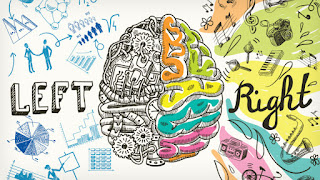Week 2: Math + Art
Before this week’s lecture on math and art I never considered
the fact that math was a foundation of art. Professor Vensa’s lecture
“Mathematics-pt1- Zero Perspective Golden
Mean” demonstrates the degree to which math was and is used by artist in
their work today. Artist used mathematics to create their paintings, drawing,
etc. One of the procedures used was “the golden ratio,” which was a divine
proportion that was considered to be aesthetically pleasing. It is similarly noted in the article What is the Golden Ratio? that the golden ratio "is known as one of the most visually satisfying of all geometric forms- hence, the appearance of the golden ratio in art,"(Hom). The vanishing
point theory was a graphical perspective also used by artists to display the
correct geometric perspective. Therefore, as professor Vensa stated in the
intro to math “the connection of art and science is mathematics.”
(Courtesy of: http://jwilson.coe.uga.edu/EMT668/EMAT6680.2000/Obara/Emat6690/Golden%20Ratio/golden.html)
(Courtesy of: http://mathworld.wolfram.com/VanishingPoint.html)
The link “Vanishing
Points and Looking at Art” I found to be quite interesting. Not only does
artist in their work use the vanishing point theory, but it also used to
display artwork in museums to display artwork. The reading suggested that
viewing art from the wrong viewpoint can make is seem distorted, thus their
simple trick of one-point perspective “can actually be used in viewing and
enjoying many paintings in museums and galleries,” (Frantz, 7). This demonstrates that without mathematical procedures and theories to create art and paintings would not be aesthetically pleasing to the eye. Without math, art may have not been as monumental.
(Courtesy of: Indianapolis Museum of Art)
This week I learned that math heavily influenced the arts and the way it was produced. I remember in middle school I took and art class and briefly learned the idea of perspective, but not into the depth that the lecture and some of the websites have provided me. Learning about the math and science behind constructing art gives us a better perspective literally and figuratively on how important the method of perspective is. Using the mathematical procedures became such a vital part of art that "almost all Renaissance artist turned to the use of perspective to enhance their compositions," (Kubovy and Tyler, 1).
Citations:
Frantz, Marc. “Lesson 3: Vanishing Points and Looking at Art" 2000. http://www.cs.ucf.edu/courses/cap6938-02/refs/VanishingPoints.pdf
Hom, E. J. (2013, June 24). What is the Golden Ratio? Retrieved April 17, 2017, from http://www.livescience.com/37704-phi-golden-ratio.html
Tyler, C., & Kubovy, M. (n.d.). The Rise of the Renaissance Perspective. Retrieved April 17, 2017, from
http://www.webexhibits.org/sciartperspective/raphaelperspective1.html
Vensa, V. (n.d.). Math Intro. Lecture.
Vensa, V. (n.d.). Mathematics-pt1- Zero Perspective Golden Mean. Lecture.





Hello Alexis,
ReplyDeleteLike you i never really understood how important math was in Art and in other subjects. Don't get me wrong I was aware that math was everywhere. However, it was never really explained to me how math can change a person's perspective in art. After reading the articles and hearing the lectures it was only then that I understood how math is intertwined with art and how it can drive to create and explain "nature". For example, the factual and the golden ration. I hope one day that others can be explained at a young age how math can influence and change how we see art.
Best,
Griselda
Alexis your discoveries are so rewarding to read. As someone who loves art and art history, it's pleasing to see other making their own connections and insights about something I study. I particularly liked the inclusion of the perspective graphic in your post. The differences between one, two, and three point linear perspective are hard to articulate and then connect to art, but the graphic made everything much clearer and allowed to you to focus on the commentary that was of greater significance.
ReplyDeleteAlexis,
ReplyDeleteYou brought up some very great points in your blog post. The shocking idea that math is the foundation of art makes me question what art would be without it. I had a similar experience in my art class in middle school, where the teacher briefly went over the idea of perspectives, but never fully went into depth. It's nice knowing now how much influence math has on art when looking at perspectives, but it would not have been so surprising to me now if we learned more about this at a younger age, growing up with this idea. This goes back to the idea of separating art classes from others. Overall you had some really great ideas in your blog, and I can see that you are picking up on the material as well as expanded on your own thoughts.